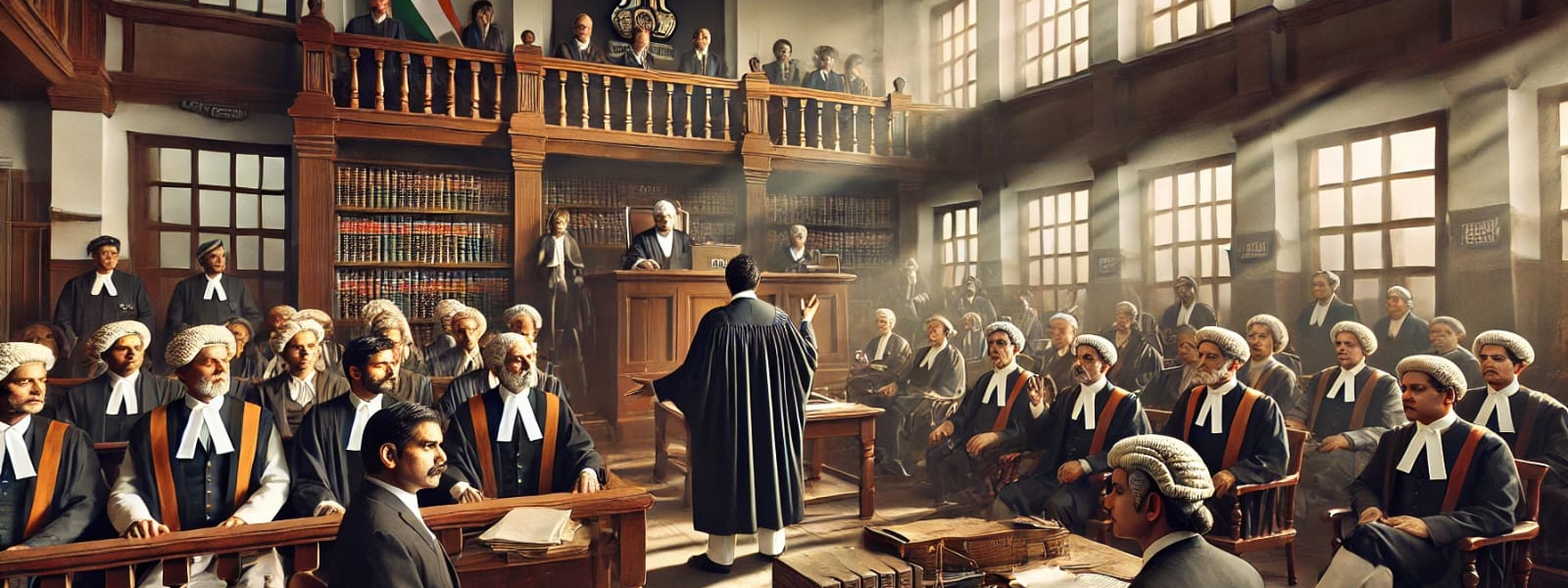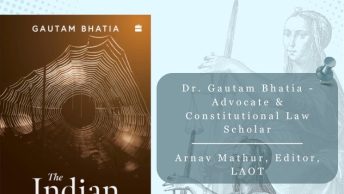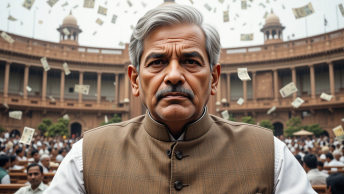Blurb: In his recent rejoinder, Dalmia clarifies the “expressed an opinion” standard to better define when recusal may be appropriate. He addresses the four rebuttals that the author raised and defends the concept of “intellectual bias” and its negative impact. This two-part reply will first examine the justification for the reference rule, the arguments supporting it, and how they fail in light of the author’s response. It concludes by noting Dalmia’s shift from a “reference rule” to a “recusal rule,” which, while more coherent, poses greater risks for the common law judiciary.
Introduction
In the days of Louis IX, justice was certain. As the late Antonin Scalia tells of the King’s proceedings, ‘one case at a time, taking into account all the circumstances, and identifying within that context the “fair” result.’
But with the force of time, civilisation turned decadent. And for us fallen men of today, we must make do with the rule of law. This unanimously claimed but ubiquitously contested principle promises one value of the law: consistency. That rank and file shall be treated equally, subject to the same law, and shall have the same redress.
The force of consistency is useful precisely because it can deliver prudent and just outcomes, without fear of extraneous and arbitrary considerations. But one must be circumspect in altering the rules of the game to particular ends, for to sway for one, may lead to the death of many others.
This formalist notion has been the subject of an enlivening dialogue between Anshul Dalmia and me. Earlier this year on this publication, I argued against Dalmia’s proposed ‘reference rule’, one that required judges to recuse in hearing cases where, by reference to a larger bench, they are in seisin of a matter on which they have expressed an opinion previously. This, he argued, was to ensure that proceedings were free from ‘intellectual bias’, a new form of prejudice he wishes to institute into judicial consciousness.
In his recent rejoinder, Dalmia expands on what the ‘expressed an opinion’ standard of the rule entails, so that we may disambiguate circumstances where such recusal may actually arise. Second, he clarifies and responds to the four rebuttals I raised in my response. Lastly, he defends the concept of ‘intellectual bias’ and how it has pernicious force.
In a two-part reply, I shall conclude my thoughts on this subject in the following manner. This part shall deal with the framework under which the reference rule was justified, the arguments advanced for it, and how I believe they have failed to hold ground in light of my response. I shall end noting how Dalmia has, rightfully but perilously, modified the reference rule to a new ‘recusal rule’. In the next part, I shall point out why this new rule, although now more internally coherent, is even more dangerous and onerous for the common law judiciary.
Changes of Mind
Conventionally, the argument against intellectual bias is based on the ability of judges to have their minds changed. Dalmia had presented three arguments against such a safeguard actually existing – common law precedents, seniority, and double-burden on the lawyers. The culmination of these factors, in his view, made the recusal rule necessary. In addition to this, he also argued that the appearance of bias principle that could justify the rule independently.
On the arguments pertaining to the symmetry of common law precedents and the appropriate legal burdens, Dalmia clarifies that the former claim is used in service of the latter to emphasise the idea that courts have a pulling tendency towards precedent and pushing tendency against the double burden on the lawyer. While the author concedes that my claim –on precedents applying to either side symmetrically – is correct, he now points to a ‘unwarranted and prejudiced burden’ thrusted on the lawyer. There are two facets to this combined contention; the first that that there is a double burden (which is putatively bad) and the second, that the burden is confounded by the judge’s ‘bias’.
On the first count, even this modified understanding fails to engage with my prior argument that the double burden – even if taken to exist for the sake of argument – is wholly appropriate and in some sense necessary for fair reasoning. At the risk of repetition, even when precedents do not control the outcome of the case, courts must engage with their reasoning, and be convinced as to why they should not be overruled, before any positive argument can be made on the other side. To put it more bluntly, this double burden is a consequence of the lawyer’s choice – they have chosen to disagree with existing authority, and to erect an alternative position in its lieu. It is only natural that they are obligated to dismantle the original reasoning anew.
On the second count, the little force this argument has is rhetorical. This is because the term ‘bias’ in relation to a judges’ prior opinion is ipso facto understood as prejudicial and not liable to change. While both Dalmia and I probably agree that these judges have some semblance of legal reasoning to reach their decisions (notwithstanding their correctness), the use of ‘bias’ over ‘predisposition’ wrongfully vilifies the ‘double burden’ as being irrational, whereas in the context of an overruling, it remains necessary for a constitutional court.
On the argument pertaining to the balance of senior-junior influence, Dalmia states that it is ‘absolutely correct’ that such a scenario may symmetrically go against the referring judge. This, in my view, settles the question. His other concerns – that the number of referee judges’ matter is true and should be seriously considered, but in any case, does not affect my defence of the status quo. The tapestry of case law that is cited thereafter goes on only to strengthen my case, wherein referring judges turn to be influenced by the seniors on bench.
To round-up, Dalmia argued for the reference rule on the aforementioned three grounds, which were rebutted in my response. The grounds were revised in his rejoinder. Here, with these three rejoinders dealt with, I conclude that the original safeguard being argued against – that ‘predisposed’ judges can always have their minds changed stands on sound footing, and don’t justify the recusal rule.
Appearances and Realities
Nonetheless, Dalmia states that the appearance of bias can alone account for the recusal rule. This is based on the argument that justice requires in the observer being satisfied that the judge had not prejudged the issue concerned. While I found this argument prima facie persuasive, I had countered by asking that if ‘appearance’ is pertinent, then why are otherwise ‘predisposed’ judges who were not part of the referring bench aren’t obligated to recuse as well.
Per the rejoinder, the reference rule has now been modified to no longer apply only to referring judges. It now includes any judge, who has either judicially or extracurially opined on the legal questions involved.
This is a welcome concession by the author, for the reference rule did not originally give sufficient reasonable classification to distinguish the type of bias from referring judges, as compared to bias from non-referring judges, in either their judicial or previously academic capacities.
Here, ‘bias’ remains a nebulous concept to grasp at. While generally, bias may deal with the relationship between the judge and the parties, this rule shifts the locus of fairness to the judge and the subject matter. This is amply mistaken at the conceptual level as, all judges have intellectual predispositions at all times. It is the duty of the adversarial system to assist them to reach the appropriate conclusions.[1]
The recusal rule simply acts on the promise of cases where there is public knowledge about this predisposition. Other forms of bias (personal or pecuniary) do not operate this way, as they emerge with reference to particular parties. The recusal rule, then, does not lie on the promise of a fair hearing – for if intellectual predispositions truly did compromise fairness, then there can never be a fair hearing in reality. Therefore, I take it that the rest of Dalmia’s argument proceeds on the grounds of appearance alone.[2]
Conclusion
Dalmia’s reference rule, as was originally argued by him, was founded on two different pillars. The first challenged the safeguard that judges could have their minds changed. Across our dialogue, I claim that all three grounds on which this challenge was raised do not apply.
Common law precedents and seniority dynamics could apply symmetrically to either supporting or opposing the position of the referring judges when they undertake their referee roles. Other factors, such as numerical strength does not disprove this thesis, but simply add another factor to caution for in developing a free-thinking judiciary.
The third claim – that lawyers acquire a double burden; and that part of this burden is to unpersuade the judge of a ‘bias’, also fail on the following counts. That such double burden, if it exists, is justified in a system of precedents; and such ‘bias’ is not actually bias, but legal reasoning that is necessary to be dealt with.
The second pillar of his argument was based on the appearance of bias rule. While an attractive argument, this framework failed to explain why such recusal rules would then be limited to referring judges alone. To remedy this error, Dalmia has eschewed the reference rule for a new recusal rule – one that is more internally coherent, and would ask any judge to recuse from a question of law when he has ‘expressed an opinion’ on it previously. In the next part, I shall deal with my concerns with this modified rule, and how I suspect it to be even more troublesome.
[1] In second part of this reply, I shall explore the meaning of ‘intellectual bias’ further. See ‘A Brief Word on Bias’.
[2] Abhijeet Shrivastava raises this precise point; the question of bias is not one of fact, for that is largely impossible to determine in advance. Therefore, Dalmia’s claim can only function on an appearance of bias basis. Nonetheless, as I have demonstrated in the next part, intellectual bias, grounded on this basis, shall run into a host of issues that render the rule essentially contrary to public policy and judicial economy.
Click here for the Part II of this series.
Sarthak Sahoo is a law student at the Rajiv Gandhi National University of Law, Punjab.
The author would like to thank Kusha Grover, Shagnik Mukherjea, and Soham Niyogi for comments on the original draft.
Ed Note: This post was edited by Jeetendra Vishwakarma and published by Abhishek Sanjay from the Student Editorial Team.








coc19y